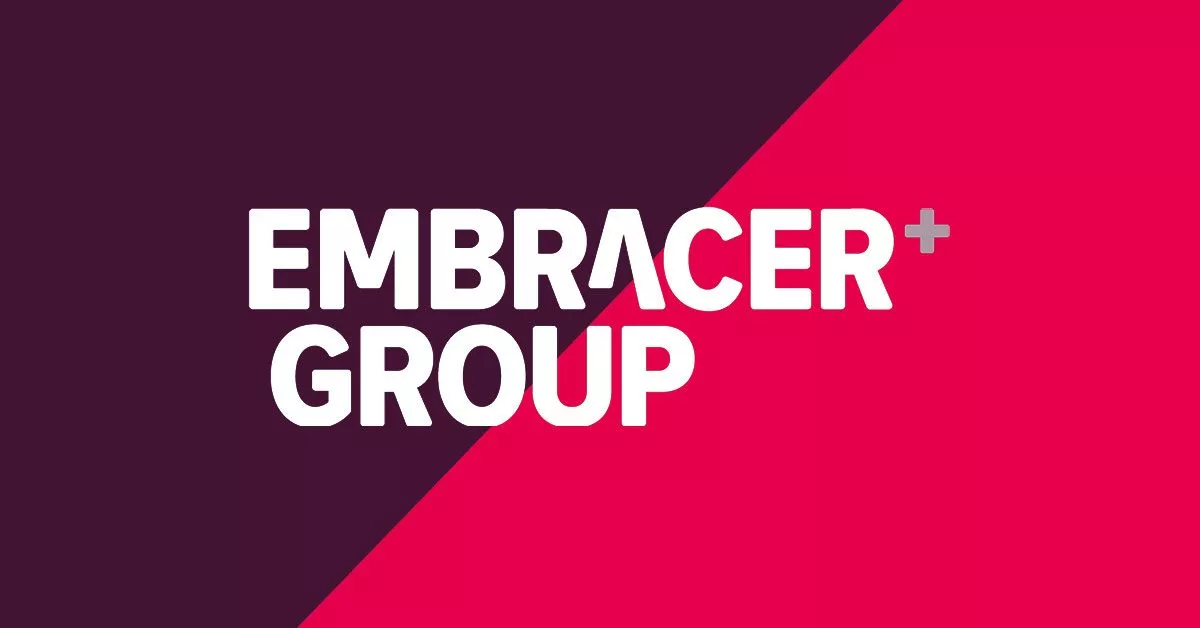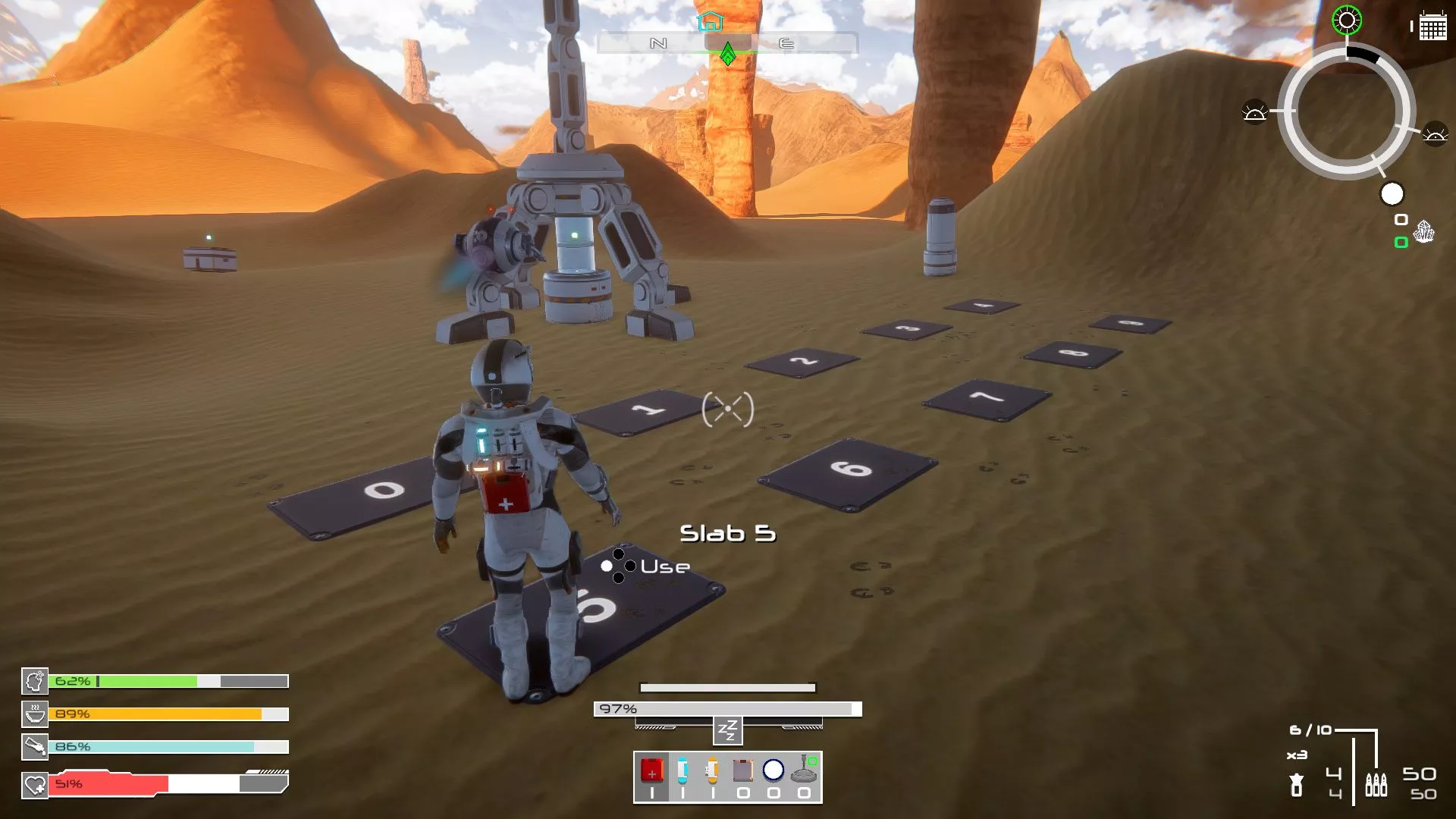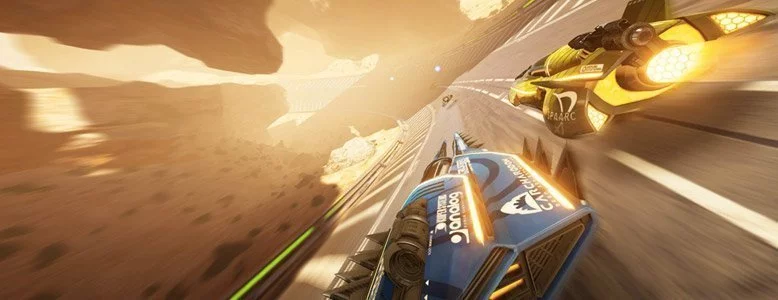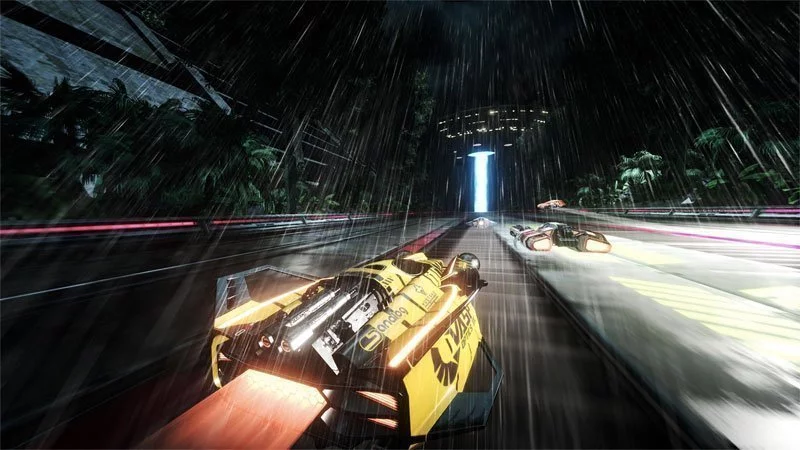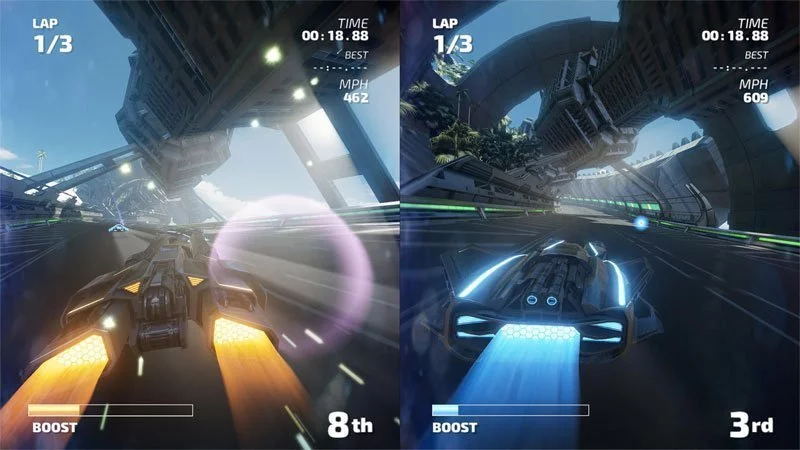Nintendo should hire developer Shin’en Multimedia to make a proper F-Zero game. It’s basically what the studio has crafted with Fast RMX for Switch, only without the licensing or budget.
Technically a sequel to Fast Racing Neo on Wii U, Fast RMX features 10 cups to play in single-player, spanning 30 courses and 15 lightning fast vehicles. While it promotes itself as entirely fresh, it’s more of an enhanced port of the Wii U game, not dissimilar to Mario Kart 8 Deluxe. Of the 30 tracks, only six are new for Switch, but that’s more than Nintendo is doing for its re-release. Fast RMX is dazzlingly fast and a straight-to-the-point anti-gravity arcade racer; there’s no mucking around, as it throws you directly into one of the most insane racing games I’ve ever played – and that’s only the easiest difficulty, and lowest speed.
Out of the gate, I really struggled with the immense speed and surprisingly competitive AI racers; they’re not the potatoes I was expecting on the novice difficulty, which is still called subsonic. I had to stop, study the controls, and actually start using the sideways lean on the LZ and RZ buttons to progress to the harder difficulties – you mightn’t need to brake often, but cornering takes effort.
There aren’t any items to collect, the focus is on the racing, but there are glowing orbs scattered across the racetrack that contribute to your boost meter. It ties into the core mechanic, outside of pure racing, by linking them to either blue or orange boosts. You’ll forever be switching between blue and orange states, to match the same coloured boost pads, or else face being slowed down, rather than speed up. At first I assumed it’d be an annoying gimmicky, but the orange and blue duo adds an intriguing element to your tactical prowess; there’s something else to focus on, aside from making it around the next corner in one piece.
While I admit to needing practice on the slowest subsonic mode, Fast RMX’s tiring unlock system means you have to complete, and win the cups of, all 30 courses before being able to up the ante; that’s a real drainer for players returning from Wii U. I also didn’t feel compelled to unlock to experiment with different vehicles, as they essentially feel the same. I like that it’s a racing game with a long, challenging single-player mode, but it’s lacking in meaningful variety.
The courses look varied in aesthetic, but in practice they all perform remarkably similar. Some have interesting little quirks, while others are plagued by annoyingly awkward turns. Almost all of them have at least some walls that are impossible to avoid at speed, even once you’ve mastered the leaning controls, turning those segments into something akin to dodgem cars. That said, F-Zero, Wipeout and even compulsive launch title Ridge Racer suffer from the same course design issues, and it’s part of the package when the focus is solely on speed.
Where other Switch games should take their cue from Fast RMX is its totally customisable control scheme. By default there’s improvement to be had, but you’re given the freedom to assign any button to whatever action you like. With the A button inevitably assigned to accelerate, the opposing X button being commissioned to swap between orange and blue modes is just wrong, seeing how it constantly needs to be pressed quickly without letting go of accelerate. Fortunately, I easily assigned it to the otherwise unused L button.
While single-player is decent, online multiplayer is terrible. There are no matchmaking options, not even a lobby. You’re eventually just thrown into a game with random people, without any options as to what to play, and no way to play with friends – even on a Nintendo platform that’s a rubbish oversight. It’s compounded by the fact Switch isn’t a very good platform for online play, at least not yet, as all online games we’ve tried have suffered from disconnecting issues. Good luck making us pay for this, Nintendo.
Local multiplayer is where Fast RMX slots in nicely as part of the launch line-up. At $28, it’s got the price right, unlike Super Bomberman R and 1-2-Switch, and offers plenty of incentive, even when Mario Kart 8 Deluxe is clearly going to take over in six weeks. It works well with a single Joy-Con in horizontal mode, a requirement for split screen gameplay, even if it lacks the same level of control customisation. With options to enable or exclude CPU racers, local multiplayer is the best of everything in Fast RMX, and at a very reasonable price. Even if you’re pencilled in Mario Kart’s encore as your multiplayer racing game on Switch, there’s plenty of time to get in some quality time with the budget Fast RMX.
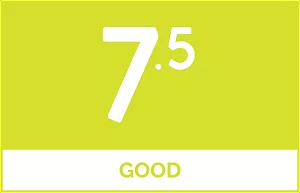 |
|
The good
|
The bad
|
Fast RMX was reviewed using a Switch digital copy, as bought by the reviewer. Click here to learn more about Stevivor’s scoring scale.
This article may contain affiliate links, meaning we could earn a small commission if you click-through and make a purchase. Stevivor is an independent outlet and our journalism is in no way influenced by any advertiser or commercial initiative.




